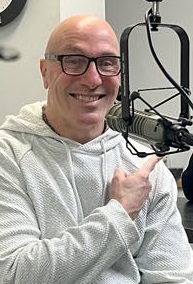Sam Morris is no longer a candidate, though he will still be on the ballot.
UPDATE: As of Feb. 10, 2025, Sam Morris declared he was no longer seeking to run for school board. Read more here.
A February primary will be required to narrow the number of candidates down to six. The term of office for a school board member is three years beginning on Monday, April 28, 2025. Six candidates will appear on the April 1, 2025, spring election ballot for three school board spots.
In a post on his campaign page on Facebook, he said in part, “My decision is in response to insensitive, hateful and homophobic social media comments directly targeting me and my family. When I decided to seek out a seat for the school board, I wanted to work with other community members to build upon the great work that has already been accomplished. However, given our country’s current political climate, and the weaponization of social media, I no longer have the desire to be involved with any type of elected office.”
He urged the people supporting him “to seek out other candidates that you feel will move our school board forward.”
Morris’ name does appear on ballots, however, for the upcoming February 18 election.
La Crosse Talk PM interview:
SCHOOL BOARD QUESTIONNAIRE
SAM MORRIS

Can you tell us about yourself — your professional background, family, education, and history in La Crosse?
Originally from Richmond, Virginia, my family and I relocated to La Crosse in 2018 upon the military retirement of my wife Jenn Schmaltz. Jenn is originally from La Crosse, and is a 89’ graduate from La Crosse Central High School. Jenn and I have a daughter, Sydney Morris, who is a student at Longfellow Middle school and is a three-sport student athlete and is a member of the combined show choir.
Upon my military retirement, I obtained a Bachelor’s Degree in Health and Wellness, followed by a Master’s in Business Administration in Healthcare Leadership from Viterbo University. I am currently enrolled at UW Stout pursuing a degree in Training and Talent Development.
I currently work at Emplify Health and I am a member of the School District of La Crosse Leadership council.
Reason for Candidacy: Why are you running for school board, and what motivates you to serve in this role?
My reason for candidacy is that I am passionate about the education and development of La Crosse School District students, and supporting their families.
What do you believe are the top priorities the school board should address and why? How would you advocate for them?
Working with city and state legislators to develop an improved school/education funding process.
Retention and recruitment of highly qualified, and talented educators:
Develop policies and programs to address education gaps among La Crosse School District students. Collaborate with City of La Crosse leaders, and agencies to address aging facilities.
Why is public education important to you, and how do you see it shaping the future of our community?
Public education is important because at it’s core, schools have the responsibility to develop students and to facilitate the discovery of their talents and abilities in a safe and learning conducive environment. Second to that, public schools must prepare students to pursue their dreams and aspirations while contributing effectively to the La Crosse community. It is my goal and passion to work with my school board colleagues to ensure that this occurs.
The district faces financial challenges due to declining enrollment and older buildings. What specific strategies would you propose to attract and retain students and address facility needs?
The district faces financial challenges due to declining enrollment and older buildings.
1. Collect data and information on the factors that are contributing to these issues.
2. Identify and become educated on current initiatives addressing these issues.
3. Identify new opportunities to develop strategies to successfully overcome these issues including partnering with local, state civic leaders and organizations.
How will you foster greater community involvement in decision-making to ensure transparency and shared ownership of the district’s challenges and successes?
1. Encourage attendance at School Board Meetings.
2. Provide opportunities for community feedback such as quarterly town hall meetings and social gatherings.
Do you see a role for the district in addressing the childcare shortage? If so, what solutions would you propose?
Yes, I do see the school district addressing childcare shortages. In the SDLC Leader meetings, it has been identified that engaging with children as early as possible has resulted in increased learning success.
What programs or resources would you advocate for to enhance students’ academic achievement, mental health, and overall well-being?
The one program that I would like to see develop is a standardized program in addressing students in crisis in the classroom. This program will need to be tailored for each grade level and school location, as well as a available resources.
How would you support teachers in their professional development and address challenges related to workload, compensation and job satisfaction?
Frequently and consistently engage with educators at all grade levels and from all locations to obtain an understanding of their challenges and communicate these issues with my school board colleagues to address these challenges through policies. This will require partnering with School District Human Resources experts, and educators to ensure that challenges are accurately addressed.
What priorities would you advocate for in the Wisconsin state biennium budget to support the district’s needs?
I would advocate for the current priorities. However, the more important issue with state budgeting is the funding model that is currently being utilized. This funding model has not kept pace with operations cost, even with reduced enrollment. It is paramount that I work with state legislators and state school boards to develop a budgeting model that will meet the demands of public education operations

